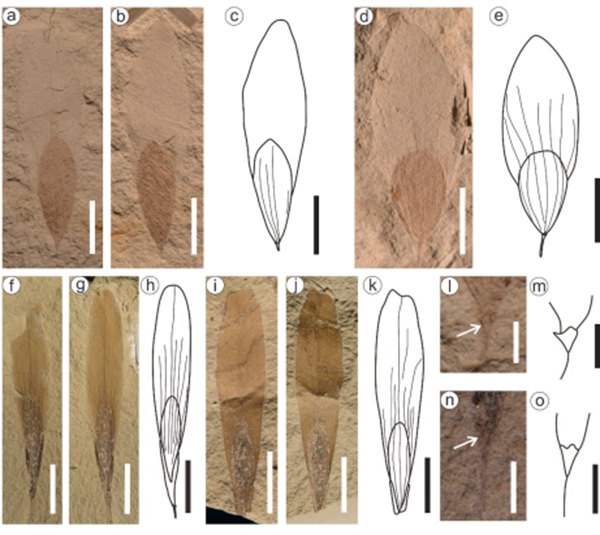The ash tree, Fraxinus L. (Family: Oleaceae) is widely distributed in the North Hemisphere. Fraxinus are deciduous, rarely evergreen trees or shrubs, which grow in a range of habitats, from sea level to subalpine elevations. The lack of pre-Miocene fossil material in the lower latitudes has limited our understanding of the biogeography, diversification and evolutionary history of this genus.
In a study published in Fossil Imprint, researchers from Xishuangbanna Tropical Botanical Garden (XTBG) presented fruit impressions of two Fraxinus species, including one new species, from the early Oligocene Lühe flora, Yunnan Province, Southwest China.
The researchers found well-preserved fossil fruits of Fraxinus in the early Oligocene of Lühe, Yunnan Province, SW China. They identified two species, based on morphological similarity with fossils and the number of specimens available in the herbarium.
The new species Fraxinus zlatkoi is named in honor of the palaeobotanist Prof. Zlatko Kvacek recognizing his significant contributions to long-term research on the floras of the Cenozoic. Another species is Fraxinus cf. honshuensis.
The two species from Lühe town can easily be distinguished by fruit width and seed shape. F. zlatkoi possesses relatively wider fruit among fossils, with a width close to that of F. oishii Huzioka, from the Middle Miocene of South Korea. However, the fruit length to seed length ratio of F. oishii is lower. In addition, the F. zlatkoi seed is obovate while F. oishii seed is rhombic or ellipsoidal.
F. zlatkoi resembles basal species which are distributed in the North America only. While Fraxinus cf. honshuensis resembles Sect. Ornus which is the most widespread lineage of Asia.
“This finding represents the oldest records of Fraxinus in low latitude region of the North Hemisphere, indicating a long persistence of Fraxinus in Southwest China since the late Paleogene and southward to the lower latitude region, gradually forming present distribution,” said HUANG Jian of XTBG.
Contact
HUNAG Jian Ph.D
Key Laboratory of Tropical Forest Ecology, Xishuangbanna Tropical Botanical Garden, Chinese Academy of Sciences, Mengla, Yunnan 666303, China
E-mail: huangjian@xtbg.org.cn

Fossil fruits of Fraxinus: photos and drawings. a–e: F. zlatkoi and f–k: Fraxinus cf. honshuensis. (Image by WU Mengxiao)

